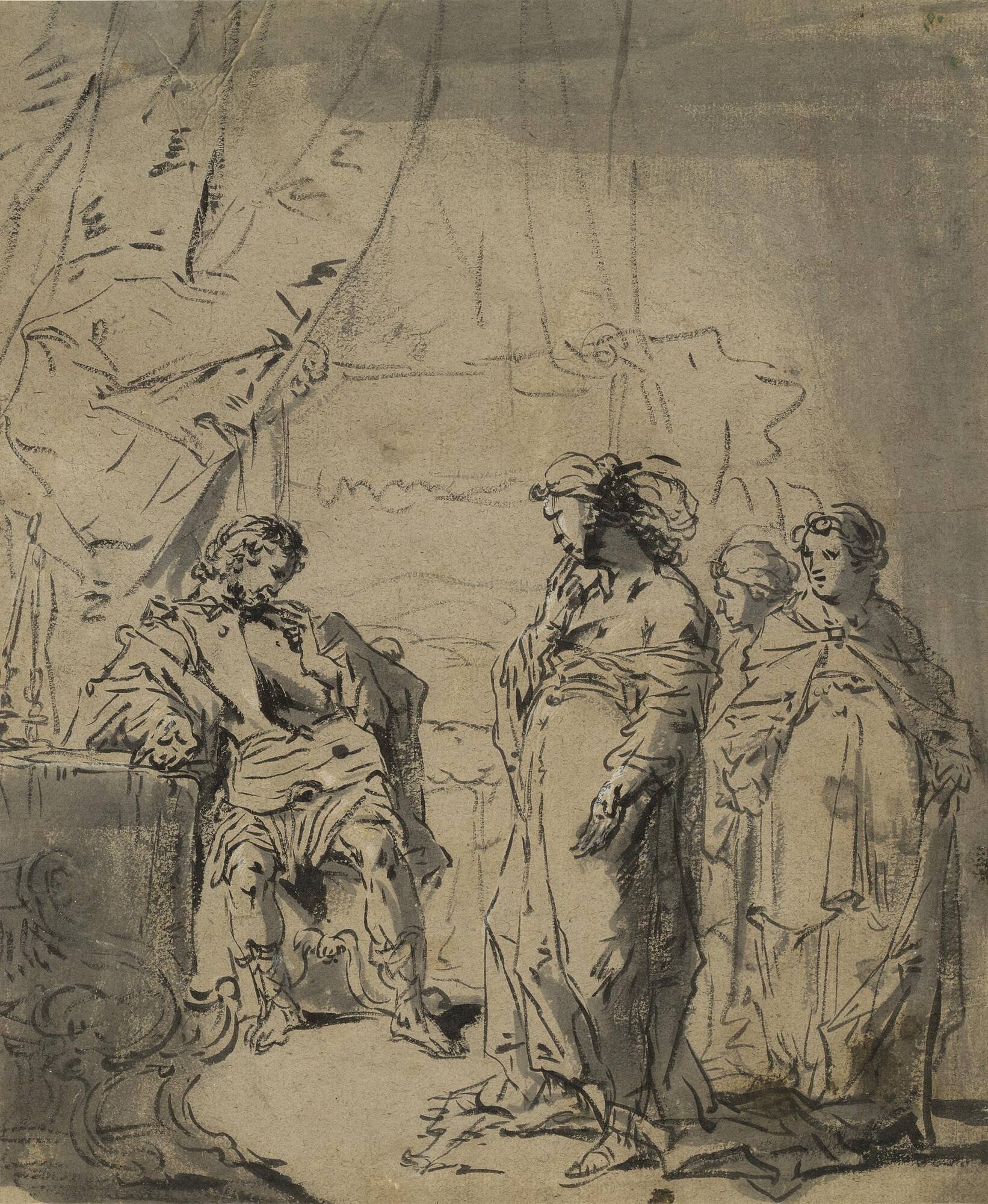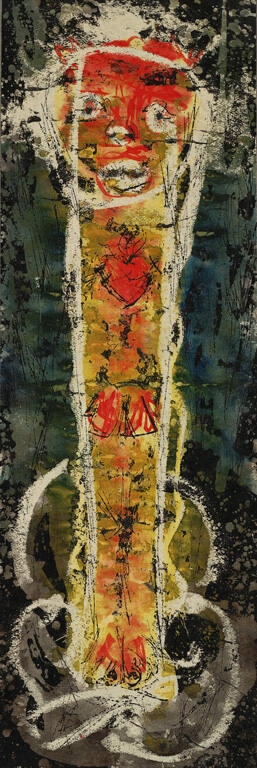
Object Details
Artist
Leonaert Bramer
Medium
Ink and wash with white heightening on tan laid paper, laid down on ivory wove card
Dimensions
Image: 14 1/2 x 12 1/8 inches (36.8 x 30.8 cm)
Credit Line
Acquired through the generosity of Jennifer, Gale, and Ira Drukier
Object
Number
96.005
Leonaert Bramer is one of the most intriguing personalities in seventeenth-century Dutch art. A pred(…)
Leonaert Bramer is one of the most intriguing personalities in seventeenth-century Dutch art. A predecessor of Vermeer in Delft — and perhaps his teacher — he lived there and in Rome, where he was involved in several street brawls. He had a wide-ranging interest in European literature and illustrated Virgil’s Aeneid, Till Uilenspiegel, and various Spanish novels, always in a style as much Italian and French in origin as Dutch. This large and beautifully preserved drawing exemplifies the Baroque not only in its subject but also in its penmanship. We see here the Old Testament heroine, Judith, with her revealing décolletage, confronting the Assyrian general Holofernes, just before cutting off his head to save her people; this is part of a long tradition in Dutch art showing the woman as victor, triumphant over cruel usurers or lecherous teachers or wayward husbands. At the same time, the drawing embodies the Baroque in its fresh and open pen- and brushwork, the spontaneity of its touch, the melodrama of its light and shadow, its large size, and the very idea that such a work as this could be considered “finished” and ready to sell. (From “A Handbook of the Collection: Herbert F. Johnson Museum of Art,” 1998)












